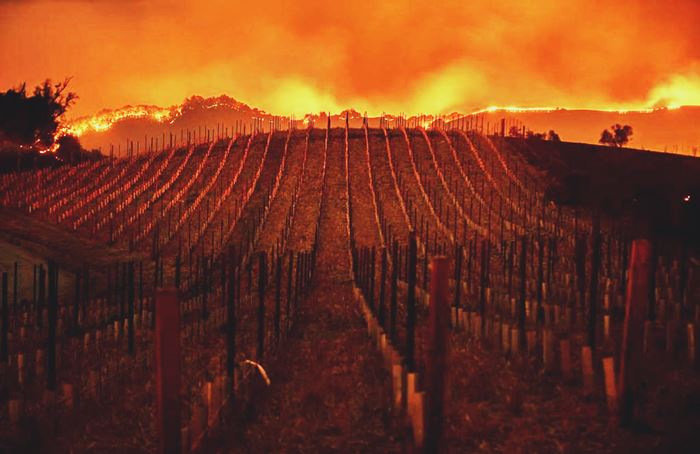Sprayable Coating Fights Wildfire Smoke in Wine Grapes
Scientists Develop Protective Coating for Smoke-Affected Grapes
2024-10-24

In an October 22 panel discussion at Oregon State University (OSU), enology and food and wine researchers highlighted their ongoing work on developing a sprayable protective coating for grapes that can mitigate the impact of wildfire smoke. The panel, which included both in-person and virtual attendees, focused on the new smoke lab at OSU and research efforts aimed at addressing the issue of smoke-tainted grapes that affect wine quality. The coating, which has been shown to block around 50% of the smoke compounds responsible for unpleasant flavors in wine, was the focal point of the discussion.
The project, first introduced through a press release in January 2024, was driven by the severe wildfire smoke that affected much of the West Coast in September 2020, impacting wine grape quality in Oregon, Washington, California, and British Columbia. The research is being led by Yanyun Zhao, an OSU professor with two decades of experience in food coatings, and Jooyeoun Jung, a senior research assistant professor. Their work involves a food-grade, cellulose nanofiber-based coating, which contains chitosan and beta-cyclodextrin, that can be applied directly to grapes in the vineyard. The coating is flexible and designed to grow along with the berries.
During the panel, OSU researchers Elizabeth Tomasino, Cole Cerrato, Patty Skinkis, and Alec Levin provided insight into the progress of their research. The team explained that the coating has shown promise in blocking three key smoke compounds—guaiacol, syringol, and meta-cresol—that cause off-flavors in wine. However, they noted that the coating is still in development, with a success rate of only 50%, as it is only able to block or capture some of these compounds. The coating has been tested in smoke trials at the OSU's Southern Oregon Research and Extension Center and Woodhall Vineyard, with no negative impact on grape growth.
The panel also discussed broader efforts to support grape growers affected by wildfire smoke. While many growers lack crop insurance, a new pilot program in 32 California counties will allow growers to obtain fire insurance protection starting in the 2025 crop year. This program, known as the fire insurance protection smoke index (FIP-SI), will provide coverage based on area-wide smoke events and eligible smoke days within a county, triggering indemnities for participating growers without the need for lab tests or proof of loss.
Tomasino emphasized the importance of research in providing data for grape contracts and insurance policies, noting that in 2020, many buyers refused to accept smoke-tainted crops. The OSU team is working to establish robust, science-based metrics to guide these decisions. Levin added that the sprayable coating represents an "exciting avenue of research" but acknowledged that there is still work to be done to refine the formulations and improve their effectiveness.
The research is funded by the Oregon Department of Agriculture Specialty Crop Block Grant and the U.S. Department of Agriculture Specialty Crop Grant. The OSU wine smoke lab continues to conduct key analyses, including free-phenol and bound-phenol analysis, to better understand and address the issue of smoke-tainted wine grapes.
Founded in 2007, Vinetur® is a registered trademark of VGSC S.L. with a long history in the wine industry.
VGSC, S.L. with VAT number B70255591 is a spanish company legally registered in the Commercial Register of the city of Santiago de Compostela, with registration number: Bulletin 181, Reference 356049 in Volume 13, Page 107, Section 6, Sheet 45028, Entry 2.
Email: [email protected]
Headquarters and offices located in Vilagarcia de Arousa, Spain.